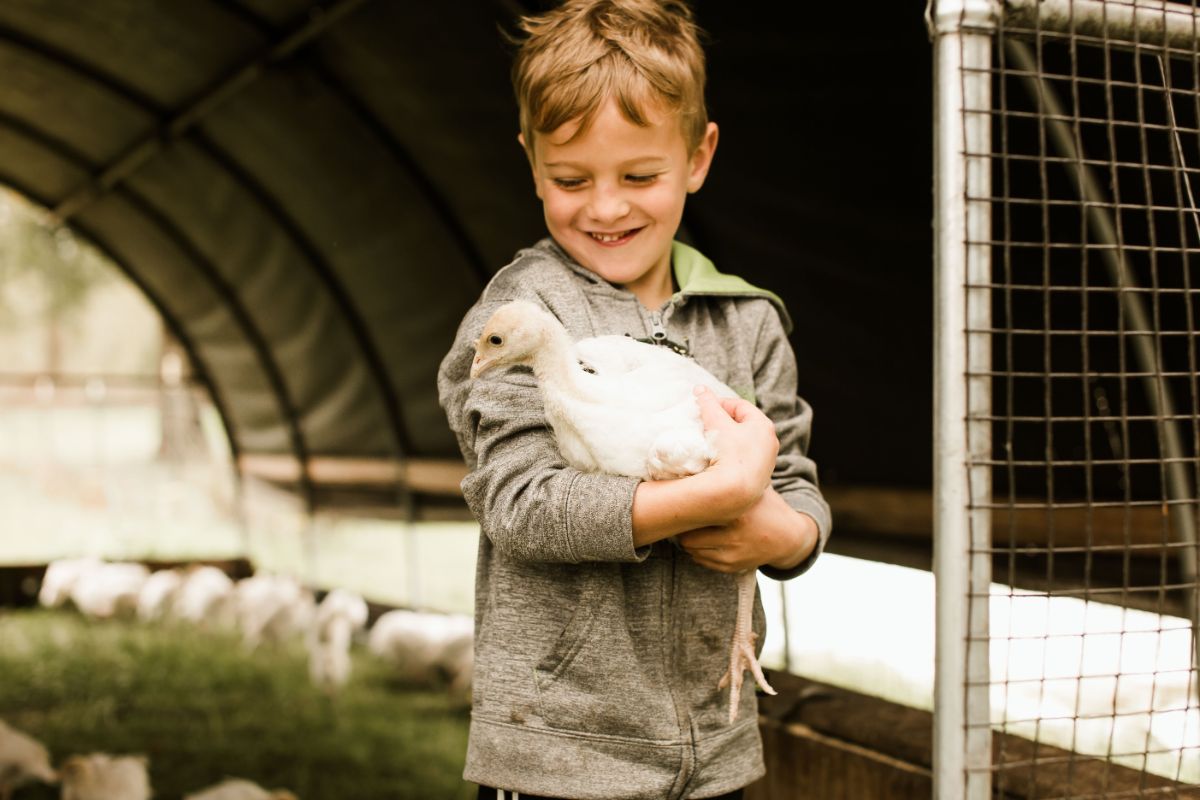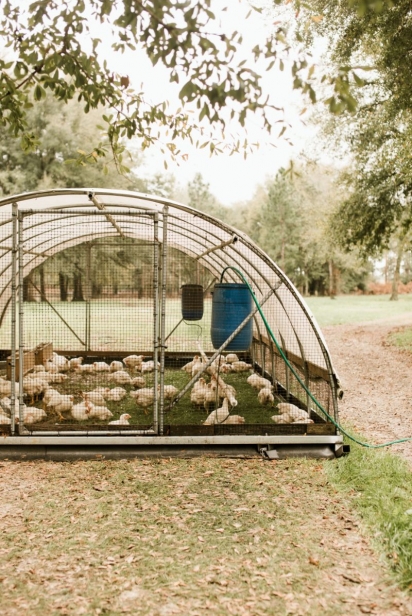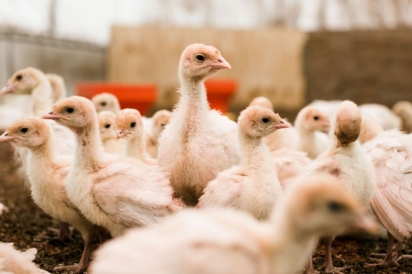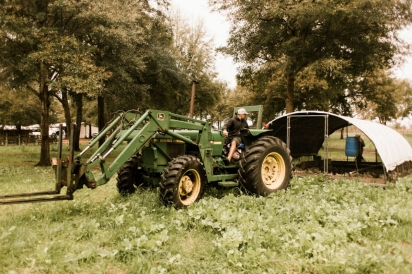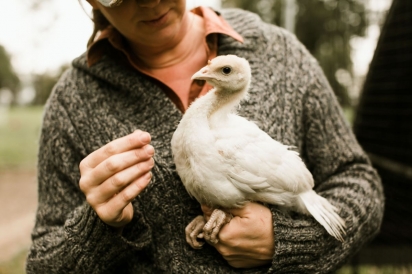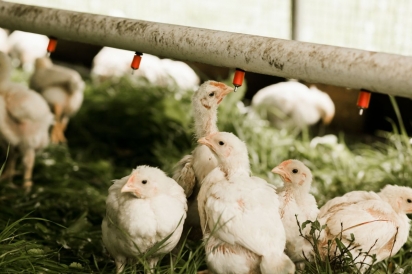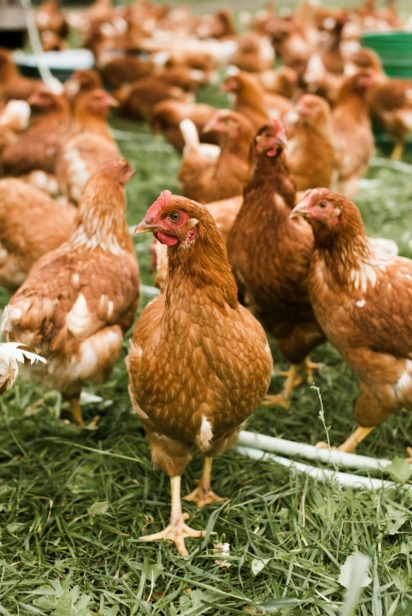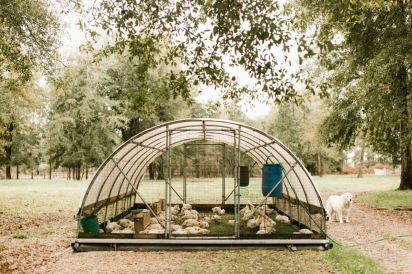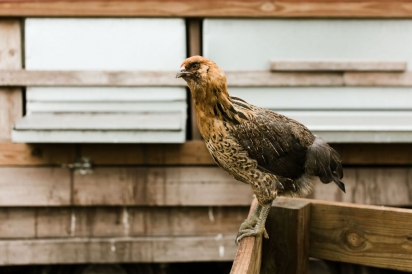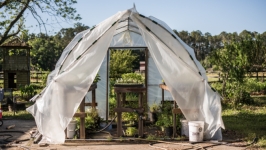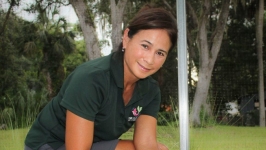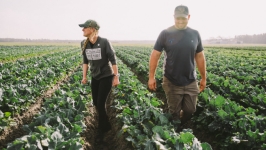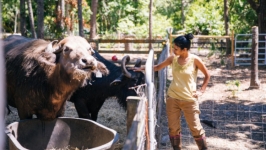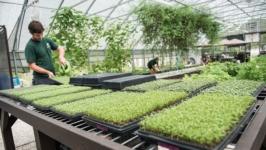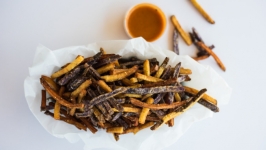Talking Turkey
Dave and Ginger Shields look out over fields of Florida black rye grass, radish and kale. It’s early spring in Northeast Florida, and their pasture at Pastured Life Farm is especially lush from overnight rainfall. Dotting the landscape are the mobile shelters housing their flagship livestock: egg-laying hens. In a nearby paddock, six week old turkey poults (babies) are getting their first taste of life on pasture, while a group of four week olds are nestled in the warmth and protection of a brooder. They don’t look like much yet, but when they grow to size they’ll fetch top dollar from customers seeking high quality, pasture-raised turkey. The part the turkeys play on the farm is currently small, but it’s growing rapidly as more consumers turn to farmers like Dave and Ginger Shields for their holiday feasts.
Most turkeys available regionally are raised on industrial farms and shipped in from far outside the state. Two thirds of all turkeys in the U.S. come from just six states, the closest big producer being North Carolina. This leaves local consumers without many options.
Two farms - Pastured Life in O’Brien and Lola Farms in Lake Butler - are looking to change that. Both say their customers are seeking the same things. They want humanely raised birds and lower environmental impact. They want to know their farmers. And of course they want great meat. For Lola Farms co-owner Kimberly Ruessler, it’s all connected. “The humane treatment of all animals makes for happier, healthier and, in the end, tastier meat.”
The Shieldses started Pastured Life Farm ten years ago. The Jacksonville natives had dreamed of their own farm for years and took the plunge after their son came home with a preschool project to find out where eggs came from. “When he told us ultimately eggs come from Publix, we realized we were doing something wrong,” said Dave, chuckling.
Pastured Life Farm has raised a few turkeys for small harvests since the beginning, but they branched out into larger batches for Thanksgiving about five years ago. “It’s been growing tremendously since,” said Dave. Holiday preorders have grown so much that they have increased their holiday flock 30 to 40 percent each year, and they expect even greater growth for 2020. “It’s gonna be more like the 50 to 80 percent range,” said Dave. “The demand is just going through the roof.”
Lola Farms, which primarily raises heritage hogs, added turkeys in 2019. Thanksgiving is the main draw, but customers are increasingly interested in individual cuts like those used for deli meats. This is something Ruessler understands personally. Lola Farms started raising turkeys for their own use (Ruessler’s husband loves deli slices), but she hated buying meat from grocery stores. “This way, he gets his turkey sandwiches and I can feel good about what we are eating, as well as enjoy the incredible flavor of a product we have raised,” said Ruessler. They hope to offer this option to customers by 2021.
Turkeys grow to harvest size in about 14 to 16 weeks, so Pastured Life Farm and Lola Farms raise their biggest flocks between August and November to prepare for Thanksgiving. Pastured Life gets its birds in a “straight run” of both hens and toms, allowing for a variety of sizes. Their turkeys average about 15-½ to 16-½ pounds, with some larger or smaller. “That gives us the ability to have a really good mix of sizes to provide what people are looking for for Thanksgiving,” says Dave.
Pastured Life and Lola Farms also use rotational grazing on pasture for their turkeys. The poults come of age in a brooder, a protected heated shelter. They are then moved to mobile shelters on pasture. Whereas the industrial model keeps turkeys in small confines, pasturing allows them to roam outdoors and forage more naturally, while fertilizing the soil. “The amazing benefit of raising them on pasture is that the nutrients, the fertility that they provide is immediately available for the pasture and it's not concentrated in one intensive location,” said Ginger.
There are challenges to this model. It is labor and resource intensive, and scalability is difficult considering the amount of land required. Additionally, turkeys can be difficult to breed, so farms rely on poults shipped from out of state breeders. Young turkeys are especially fragile and take longer to feather than other poultry. The Shieldses reduce stress on their poults by personally transporting them from West Virginia rather than shipping them, but all of these factors increase cost.
Still, there are many advantages to pasturing, and for an increasing number of consumers, the costs are worthwhile. As shelters are moved daily, it provides the turkeys access to fresh pasture and allows them to forage widely. “The turkey is probably one of the most efficient and best foragers,” said Ginger. “They’ll eat acorns, they'll eat berries and everything. Because of that, they really take on the local flavoring of a region.” This means Northeast Florida turkeys will have a different taste than those raised elsewhere. “I really like the idea of having food that tastes different from each place to the next,” said Dave. Ruessler agreed. “As for flavor, well, that speaks for itself.”


